

Articles
How To Store Fresh Strawberries After Picking
Modified: February 23, 2024
Looking for articles on how to store fresh strawberries after picking? Discover expert tips and tricks to keep your strawberries fresh and flavorful for longer.
(Many of the links in this article redirect to a specific reviewed product. Your purchase of these products through affiliate links helps to generate commission for Storables.com, at no extra cost. Learn more)
Introduction
Strawberries are a delicious and nutritious fruit that many people enjoy during the summer months. Whether you have just picked fresh strawberries from your garden or bought them from a local farm, it’s important to know how to properly store them to ensure their quality and freshness. When stored correctly, fresh strawberries can last for several days, allowing you to enjoy them in various dishes or simply as a healthy snack.
In this article, we will explore the best practices for storing fresh strawberries and provide you with useful tips to extend their shelf life. Whether you plan to store them in the refrigerator, freeze them, or keep them at room temperature, we’ll guide you on how to do it right. By following these guidelines, you can make the most out of your freshly picked or purchased strawberries, preserving their taste, texture, and nutritional value.
Before we delve into the storage methods, it’s important to note that strawberries are highly perishable. They have a high water content and are prone to molding and spoilage if not stored properly. Therefore, it’s crucial to handle them with care and store them in suitable conditions to maintain their freshness as long as possible.
Are you ready to become a strawberry storage expert? Let’s dive in and explore the different methods of storing fresh strawberries after picking!
Key Takeaways:
- Properly storing fresh strawberries is essential to maintain their quality, flavor, and nutritional value. By following best practices, such as handling with care and using breathable containers, you can extend the shelf life of your strawberries and enjoy their sweetness for longer periods of time.
- Whether you choose to store your strawberries in the refrigerator, freeze them, or keep them at room temperature, each method has its own guidelines and benefits. By implementing tips such as keeping strawberries dry and avoiding direct sunlight, you can further enhance the shelf life of your strawberries and fully enjoy their freshness and flavor.
Read more: How To Store Fresh Picked Strawberries
Best Practices for Storing Fresh Strawberries
Proper storage is essential to maintain the quality and freshness of fresh strawberries. By following these best practices, you can ensure that your strawberries stay delicious and last longer:
- Handle with care: When handling fresh strawberries, it’s important to be gentle and avoid squeezing or bruising them. Their delicate texture can be easily damaged, leading to spoilage.
- Remove any damaged or moldy berries: Before storing your strawberries, carefully inspect them and remove any berries that show signs of mold or have soft spots. Removing these spoiled berries helps prevent the spread of mold and prolongs the shelf life of the remaining strawberries.
- Do not wash until ready to consume: It’s best to avoid washing strawberries before storing them. Moisture can promote mold growth and cause the strawberries to spoil faster. Instead, wash them just before eating or using them in recipes.
- Store strawberries at their prime: Strawberries are at their peak freshness when they are fully ripe. If you pick or purchase strawberries that are not fully ripe, allow them to ripen at room temperature for a day or two before storing them.
- Store strawberries in a single layer: Arrange your strawberries in a single layer in a container or on a tray. This helps prevent them from getting crushed or squashed, which can lead to spoilage.
- Avoid overpacking: Avoid overcrowding strawberries when storing them. Leave some space around each berry to allow for air circulation, which helps prevent the accumulation of moisture and mold.
- Keep strawberries cool: Strawberries are sensitive to heat, so it’s important to store them in a cool location. Heat speeds up the ripening process and can cause strawberries to become mushy and spoil quickly.
- Use breathable containers: For storing strawberries in the refrigerator, use containers that allow for ventilation. Plastic containers with small holes or ventilation panels are ideal for this purpose. Avoid storing strawberries in airtight containers, as it can trap moisture and accelerate spoilage.
- Check and remove any spoiled berries regularly: To prevent the spread of mold, check your stored strawberries regularly and remove any berries that show signs of spoilage. This will help prolong the freshness of the remaining strawberries.
By following these best practices, you can ensure that your fresh strawberries stay in optimal condition and maintain their flavor, juiciness, and nutritional value for as long as possible.
Cleaning and Preparing Strawberries for Storage
Before storing your fresh strawberries, it’s important to properly clean and prepare them. This helps remove any dirt, pesticides, or bacteria that may be present on the berries. Here’s a step-by-step guide on how to clean and prepare strawberries for storage:
- Remove the stems: Start by removing the green stems from each strawberry. You can use a paring knife or simply twist off the stems with your fingers. Removing the stems not only makes the strawberries more visually appealing but also prevents them from absorbing excess moisture during storage.
- Gently rinse the strawberries: Place the strawberries in a colander and give them a gentle rinse under cold running water. Avoid soaking the strawberries, as they can quickly absorb water and become mushy.
- Pat dry with a paper towel: After rinsing, gently pat the strawberries dry using a clean paper towel. This helps remove any excess moisture that could lead to mold formation.
- Allow the strawberries to air dry: To ensure that the strawberries are completely dry before storage, leave them on a clean kitchen towel or on a paper towel for about 15 minutes. This step reduces the risk of moisture buildup and extends the strawberries’ shelf life.
It’s worth noting that it’s best to clean and prepare strawberries just before storing them, rather than in advance. This helps prevent the berries from becoming too moist and reduces the risk of spoilage.
Once your strawberries are properly cleaned and prepared, you’re ready to store them using one of the recommended methods: storing in the refrigerator, freezing, or keeping at room temperature. Each method has its own guidelines and benefits, so let’s explore them in detail in the following sections.
Storing Strawberries in the Refrigerator
One of the most common methods of storing fresh strawberries is in the refrigerator. The cool temperature of the refrigerator helps slow down the ripening process and extends the shelf life of the berries. Here’s how to store strawberries in the refrigerator:
- Choose the right container: Use a breathable container, such as a plastic container with small holes or ventilation panels, to store your strawberries in the refrigerator. Alternatively, you can line a container with a paper towel to absorb excess moisture.
- Avoid washing until ready to use: It’s best to avoid washing strawberries before refrigerating them, as moisture can promote mold growth. Only wash the strawberries just before consuming or using them in recipes.
- Place a layer of paper towels: Before placing the strawberries in the container, line the bottom with a layer of paper towels. This will help absorb any excess moisture and keep the strawberries dry.
- Arrange strawberries in a single layer: Place the strawberries in the container in a single layer, taking care not to overcrowd them. Leave some space around each strawberry to allow for air circulation.
- Seal the container: Once the strawberries are arranged in the container, seal it with its lid or plastic wrap. This helps maintain a consistent temperature and prevents the transfer of odors from other foods in the refrigerator.
- Store in the refrigerator: Place the container of strawberries in the refrigerator’s main compartment, away from any strong odors. The ideal temperature for storing strawberries is between 32°F (0°C) and 40°F (4°C).
- Check and remove any spoiled berries: Regularly check the stored strawberries for any signs of spoilage, such as mold or soft spots. Remove any damaged berries promptly to prevent the spread of mold to the rest of the strawberries.
When stored in the refrigerator following these guidelines, fresh strawberries can typically last for up to five to seven days. However, it’s best to consume them as soon as possible for the freshest flavor and texture.
Now that you know how to store strawberries in the refrigerator, let’s explore the next method: freezing fresh strawberries for longer-term storage.
Freezing Fresh Strawberries
Freezing fresh strawberries is an excellent way to preserve their flavor and extend their shelf life for future use. Whether you have an abundance of freshly picked strawberries or want to take advantage of a sale at the grocery store, here’s how to freeze them properly:
- Prepare the strawberries: Start by removing the tops and stems from the strawberries. You can use a paring knife or twist them off gently. Then, rinse the strawberries under cold running water to remove any dirt or debris.
- Pat dry: After rinsing, gently pat the strawberries dry with a paper towel. Removing excess moisture helps prevent ice crystals from forming and preserves the strawberries’ texture and flavor.
- Slice or leave whole: Decide whether you want to freeze the strawberries whole or slice them. Sliced strawberries are convenient for adding to smoothies or baking, while whole strawberries can be used for toppings or garnishing.
- Arrange on a baking sheet: Lay the prepared strawberries in a single layer on a baking sheet lined with parchment paper or a silicone mat. Make sure the strawberries do not touch each other, as this helps prevent them from freezing together.
- Flash-freeze: Place the baking sheet with the strawberries in the freezer and allow them to freeze for about 2 to 4 hours, or until they are firm and completely frozen. Flash freezing ensures that the strawberries freeze individually instead of forming a clump.
- Transfer to a freezer-safe container or bag: Once the strawberries are fully frozen, transfer them to a freezer-safe container or a resealable plastic bag. Be sure to remove any excess air from the bag before sealing it tightly. Label the container or bag with the date to keep track of their freshness.
- Store in the freezer: Place the container or bag of frozen strawberries in the freezer, preferably in a single layer to prevent them from sticking together. They can be stored in the freezer for up to 9 months.
- Thawing frozen strawberries: When you’re ready to use the frozen strawberries, remove them from the freezer and allow them to thaw in the refrigerator for a few hours. Alternatively, you can use them directly in recipes without thawing, especially if you’re adding them to smoothies or baking.
By properly freezing fresh strawberries, you can enjoy their sweet and juicy flavor all year round. They can be used in a variety of dishes, such as smoothies, jams, pies, and desserts.
Now that you know how to freeze fresh strawberries, let’s explore the option of storing strawberries at room temperature.
After picking fresh strawberries, store them in the refrigerator in a single layer on a paper towel-lined tray to prevent moisture buildup and spoilage. Avoid washing them until ready to eat to prolong their shelf life.
Read more: How To Store Freshly Picked Strawberries
Storing Strawberries at Room Temperature
While refrigeration and freezing are the preferred methods for storing strawberries, there may be occasions where storing them at room temperature is necessary or preferred. Here are some guidelines for storing strawberries at room temperature:
- Choose the right location: Find a cool and well-ventilated area in your home to store the strawberries. Avoid placing them in direct sunlight or near sources of heat, such as stoves or radiators, as this can cause them to spoil quickly.
- Inspect and remove damaged berries: Before storing strawberries at room temperature, carefully inspect them for any signs of mold or damage. Remove any spoiled berries to prevent the spread of mold to the rest of the batch.
- Avoid washing until ready to use: Just like with refrigeration, it’s best to avoid washing strawberries until you’re ready to consume or cook with them. Moisture can lead to mold growth and spoilage, so it’s important to keep the strawberries dry.
- Store in a breathable container: Place the strawberries in a shallow container or a berry storage container that allows for proper air circulation. Avoid tightly sealing the container to prevent moisture buildup.
- Check for freshness regularly: Since room temperature storage can accelerate the ripening process, it’s important to check the strawberries daily for any signs of overripening or spoilage. Remove any berries that show spoilage to prevent further deterioration.
- Consume within 1-2 days: Strawberries stored at room temperature typically have a shorter shelf life compared to refrigerated strawberries. It’s recommended to consume them within 1-2 days to enjoy them at their best.
Storing strawberries at room temperature may be suitable when you plan to use them quickly, such as for immediate consumption or for immediate use in recipes. However, it’s important to note that room temperature storage does not offer the same level of preservation as refrigeration or freezing.
Regardless of the storage method you choose, it’s crucial to maintain the freshness and quality of your strawberries by regularly checking for any signs of spoilage or damage and removing any affected berries promptly.
Now that you are familiar with the various storage methods for fresh strawberries, let’s explore the importance of using proper containers in the next section.
Using Proper Containers for Strawberry Storage
Choosing the right containers for storing strawberries is crucial for maintaining their freshness and prolonging their shelf life. Proper containers help protect the strawberries from moisture, mold, and damage. Here are some recommended options for storing strawberries:
- Breathable plastic containers: Use plastic containers specifically designed for storing berries. These containers have small holes or ventilation panels that allow for proper airflow while preventing excessive moisture buildup.
- Glass containers with lids: Glass containers with tight-fitting lids can also be used to store strawberries. Ensure that the lids create a secure seal to prevent the entry of air and moisture.
- Paper or mesh bags: Paper bags or mesh bags are suitable for storing strawberries if you plan to use them within a day or two. These bags allow for some airflow, which helps prevent moisture buildup.
- Paper towels: Line the bottom of the storage container with a layer of paper towels to absorb any excess moisture from the strawberries. This helps prevent the strawberries from sitting in damp conditions.
- Airtight freezer bags: If you’re freezing strawberries, make sure to use airtight freezer bags. Squeeze out as much air as possible before sealing the bags to prevent freezer burn.
- Mason jars: Mason jars are a great option for storing small amounts of strawberries or for preserving them in syrup or jams. Ensure that the jars are sterilized and properly sealed.
When selecting containers, avoid using plastic bags without any ventilation, as they trap moisture and promote the growth of mold. It’s also important to choose containers that are clean and free from any residual odors, as strawberries can absorb odors easily.
Remember to label your containers with the date of storage to keep track of the freshness of your strawberries. Additionally, consider the size of the container based on the quantity of strawberries you need to store. Overcrowding or underfilling the container can impact airflow and increase the risk of spoilage.
By using the proper containers for strawberry storage, you can help maintain their texture, flavor, and overall quality, ensuring that they remain fresh and delicious for a longer period of time.
Now that you know the importance of using proper containers, let’s explore some additional tips to help extend the shelf life of your fresh strawberries.
Tips for Extending the Shelf Life of Fresh Strawberries
Want to make your fresh strawberries last even longer? Follow these tips to help extend their shelf life and preserve their flavor:
- Handle with care: Handle strawberries gently to avoid bruising or damaging them, as this can lead to premature spoilage.
- Keep them dry: Moisture promotes mold growth, so it’s important to keep strawberries as dry as possible. Only wash them right before using or consuming.
- Store in the coldest part of the refrigerator: Place your strawberries in the coldest part of the refrigerator, such as the back of the main compartment or the lowest shelf. This helps maintain a consistently cool temperature.
- Do not stack or pile: Avoid stacking or piling strawberries on top of each other, as this can cause the bottom berries to become crushed and spoil faster. Keep them in a single layer whenever possible.
- Separate any damaged berries: If you notice any damaged or moldy berries, remove them from the batch immediately to prevent mold from spreading to the rest of the strawberries.
- Avoid exposure to direct sunlight: Direct sunlight can cause strawberries to ripen and spoil quickly. Store them away from windows or other areas with direct sunlight.
- Don’t wash or remove the stems until ready to use: As mentioned earlier, it’s best to avoid washing strawberries until you’re ready to consume or cook with them. Similarly, it’s recommended to keep the stems intact until you’re ready to use the berries to prevent moisture loss and spoilage.
- Consider refrigerating cut or sliced strawberries: If you’ve cut or sliced your strawberries, it’s best to store them in the refrigerator in an airtight container to maintain their freshness and prevent them from drying out.
- Use a vinegar wash: If you notice that your strawberries tend to spoil quickly, you can try using a vinegar wash. Mix one part white vinegar with three parts water and briefly soak the strawberries before rinsing with fresh water. This can help remove any bacteria or mold spores that may contribute to spoilage.
By following these tips, you can help maximize the shelf life of your fresh strawberries and enjoy their sweet flavor for an extended period of time.
Remember, even with the best storage practices, fresh strawberries are still highly perishable. It’s recommended to consume them as soon as possible for the best flavor and quality.
Now that you’re equipped with these helpful tips, you can make the most out of your fresh strawberries and enjoy them in a variety of delicious recipes!
Excited to experiment with fresh strawberries in the kitchen? The possibilities are endless. From delightful strawberry shortcakes to refreshing strawberry salads, the vibrant flavor of strawberries can elevate any dish. So go ahead, store your fresh strawberries with confidence, and savor the taste of summer all year round!
Conclusion
Properly storing fresh strawberries is essential to maintain their quality, flavor, and nutritional value. By following the best practices outlined in this article, you can extend the shelf life of your strawberries and enjoy their sweetness for longer periods of time.
Whether you choose to store your strawberries in the refrigerator, freeze them, or keep them at room temperature, each method has its own guidelines and benefits. Storing strawberries in the refrigerator provides a cool environment that slows down the ripening process, while freezing allows you to preserve them for future use. Room temperature storage is suitable for short-term use, but it’s important to consume strawberries quickly to avoid spoilage.
Using the right containers for strawberry storage is crucial for preventing moisture buildup and protecting the berries from damage. Breathable plastic containers, glass containers with lids, or paper/mesh bags are recommended options. Proper handling and regular inspection of your strawberries also play a significant role in extending their freshness.
By implementing tips such as keeping strawberries dry, storing them in the coldest part of the refrigerator, and avoiding direct sunlight, you can further enhance the shelf life of your strawberries. Additionally, using a vinegar wash and refrigerating cut/sliced strawberries can help prevent spoilage.
Remember, even with the best storage practices, fresh strawberries are still highly perishable. To fully enjoy their freshness and flavor, it’s recommended to consume them as soon as possible.
Now that you have a comprehensive understanding of how to store fresh strawberries, it’s time to put your knowledge into practice. Explore various recipes and incorporate the vibrant flavor of strawberries into your culinary delights. Whether it’s a refreshing smoothie, an indulgent dessert, or a simple fruit salad, let the sweetness of fresh strawberries brighten up your meals.
So, go ahead and confidently store your fresh strawberries using the methods and tips provided in this article. With proper storage techniques, you can savor the taste of juicy strawberries all year round!
Frequently Asked Questions about How To Store Fresh Strawberries After Picking
Was this page helpful?
At Storables.com, we guarantee accurate and reliable information. Our content, validated by Expert Board Contributors, is crafted following stringent Editorial Policies. We're committed to providing you with well-researched, expert-backed insights for all your informational needs.

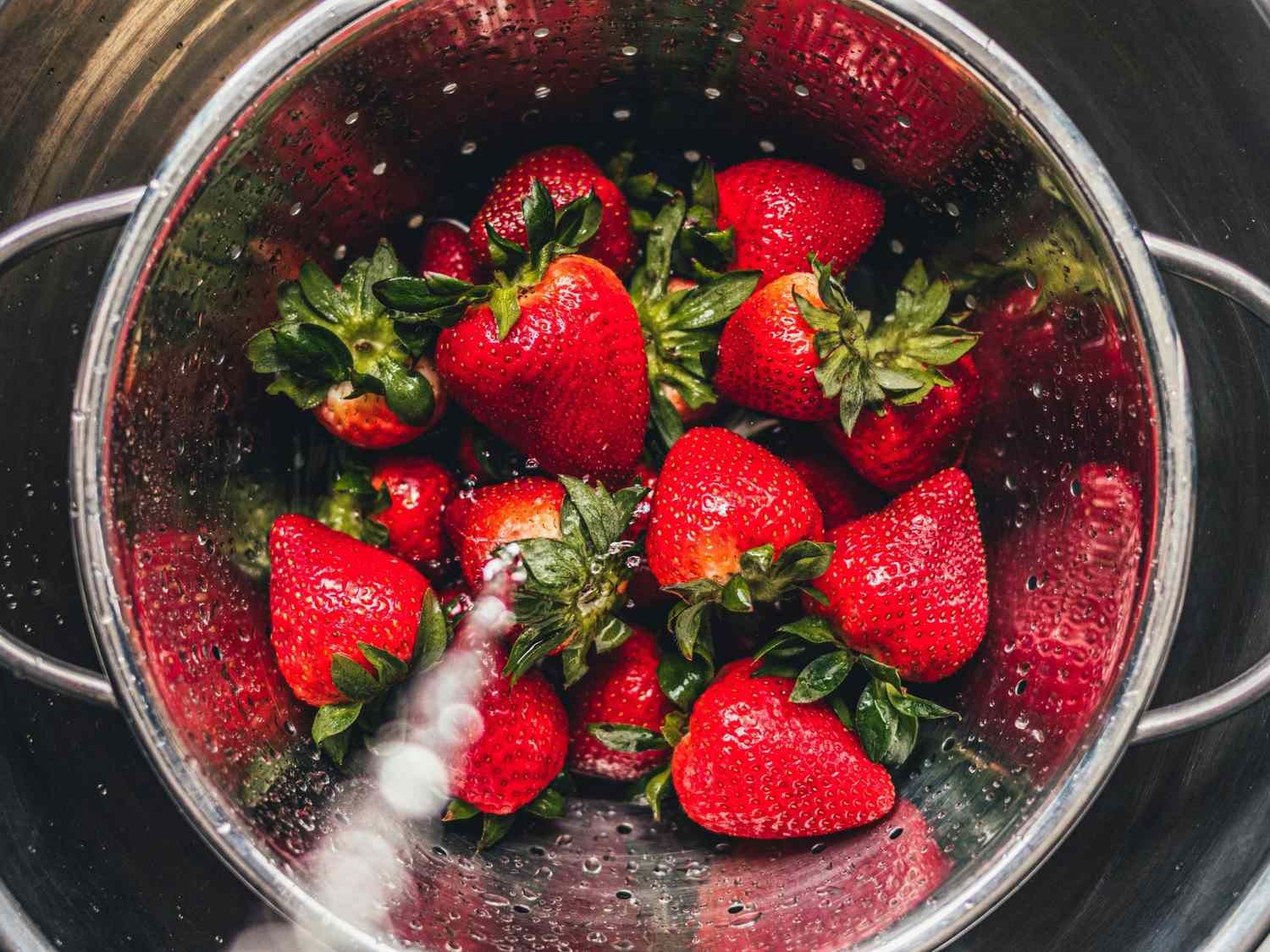


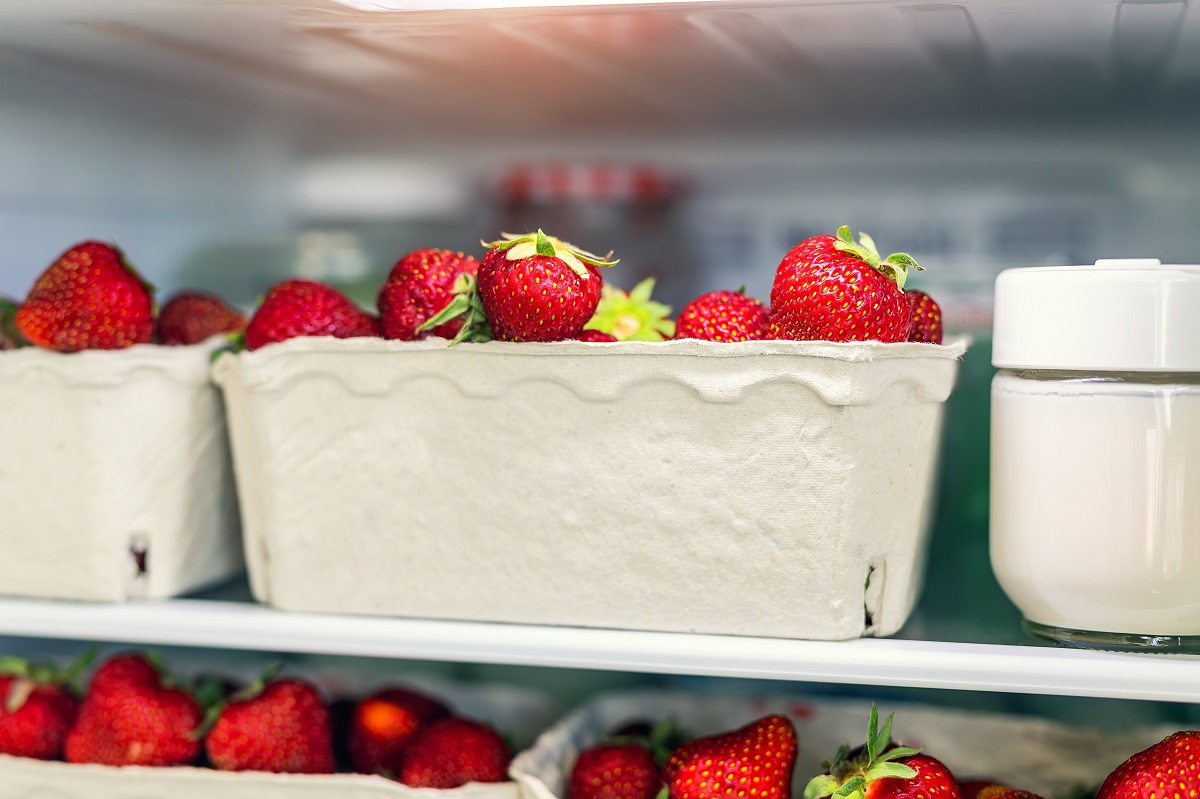
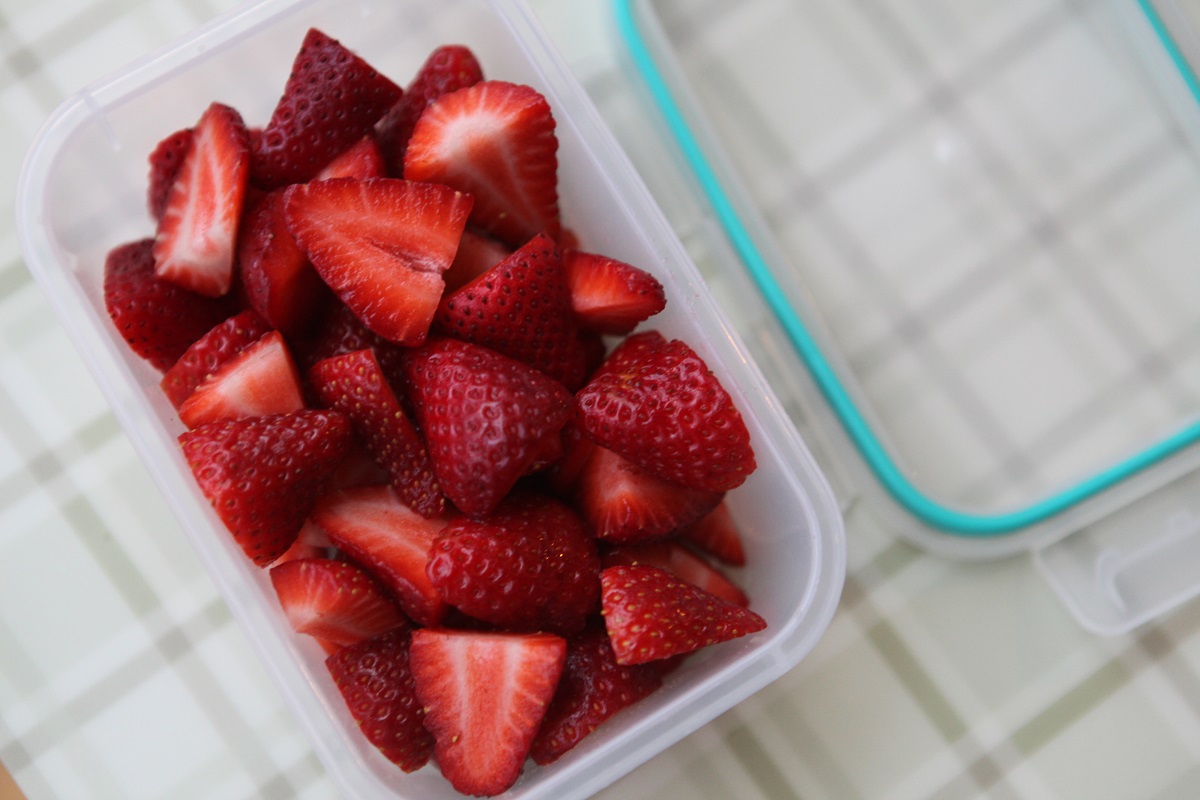
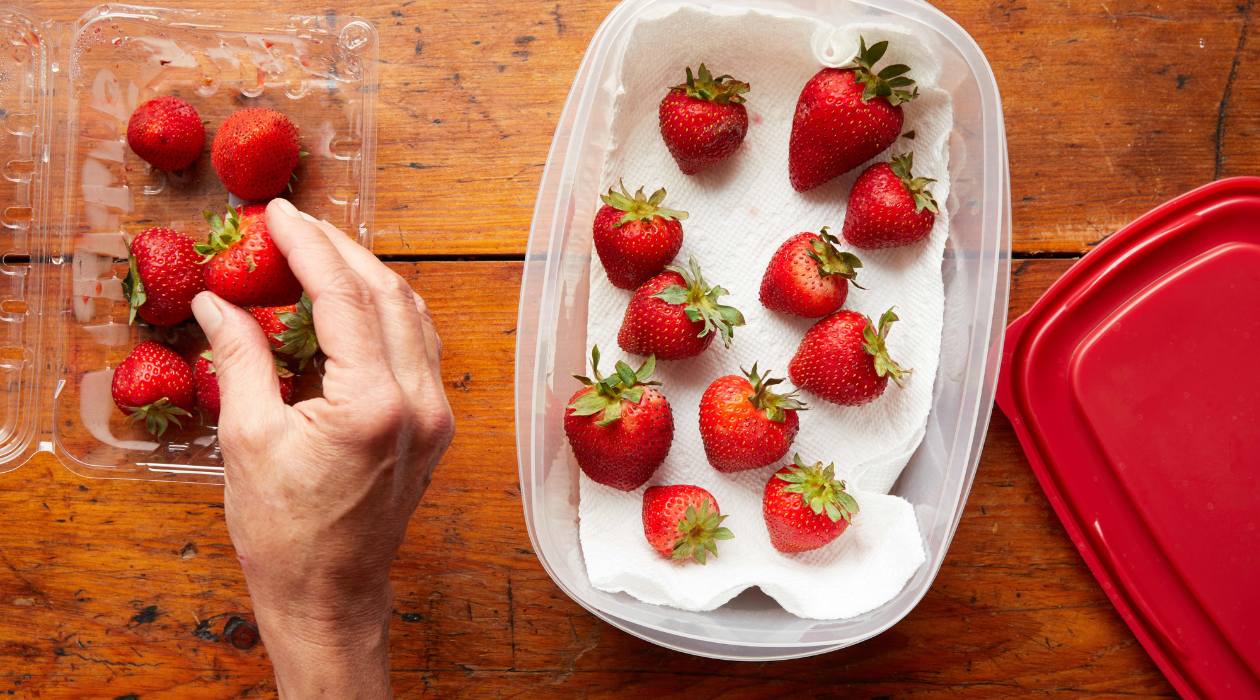
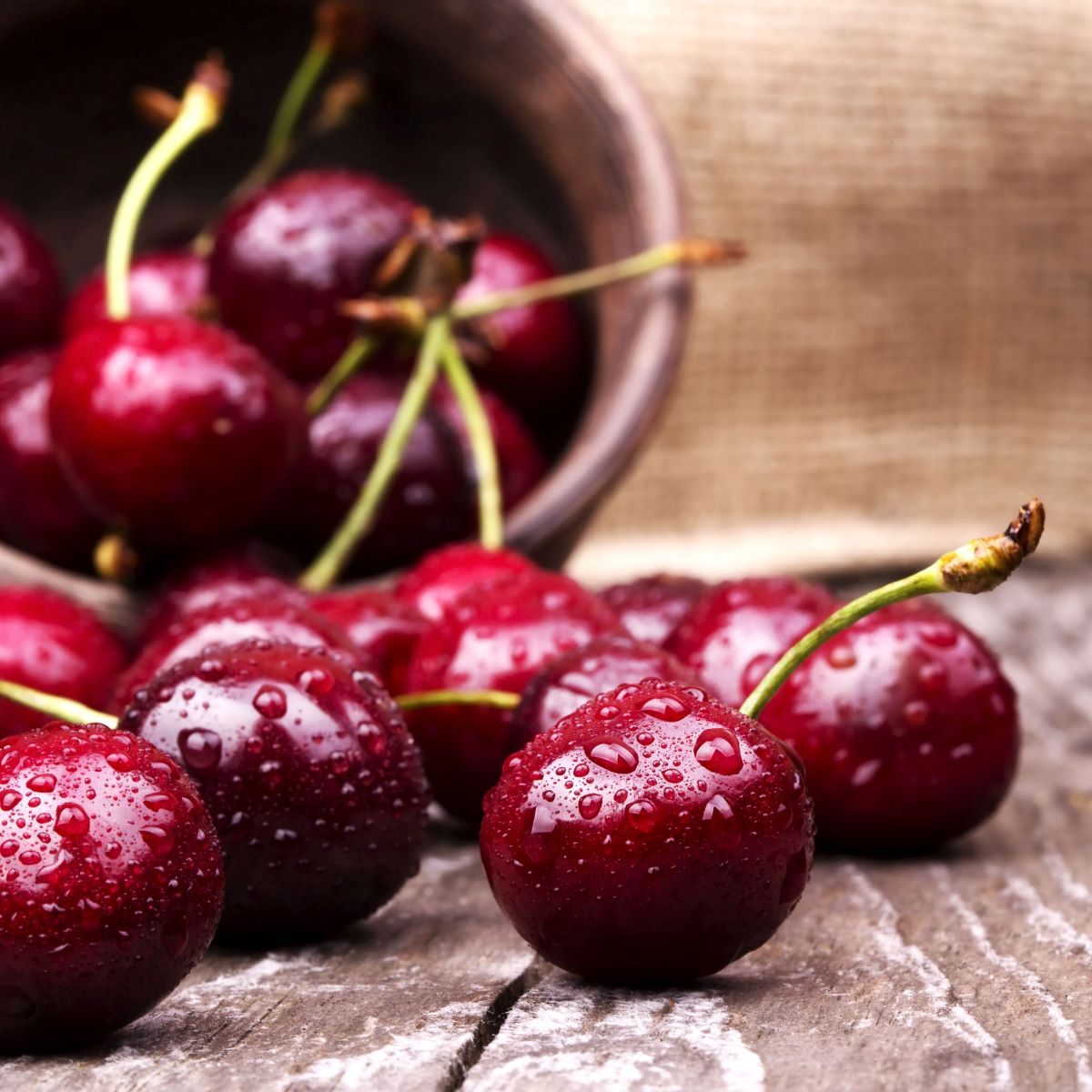
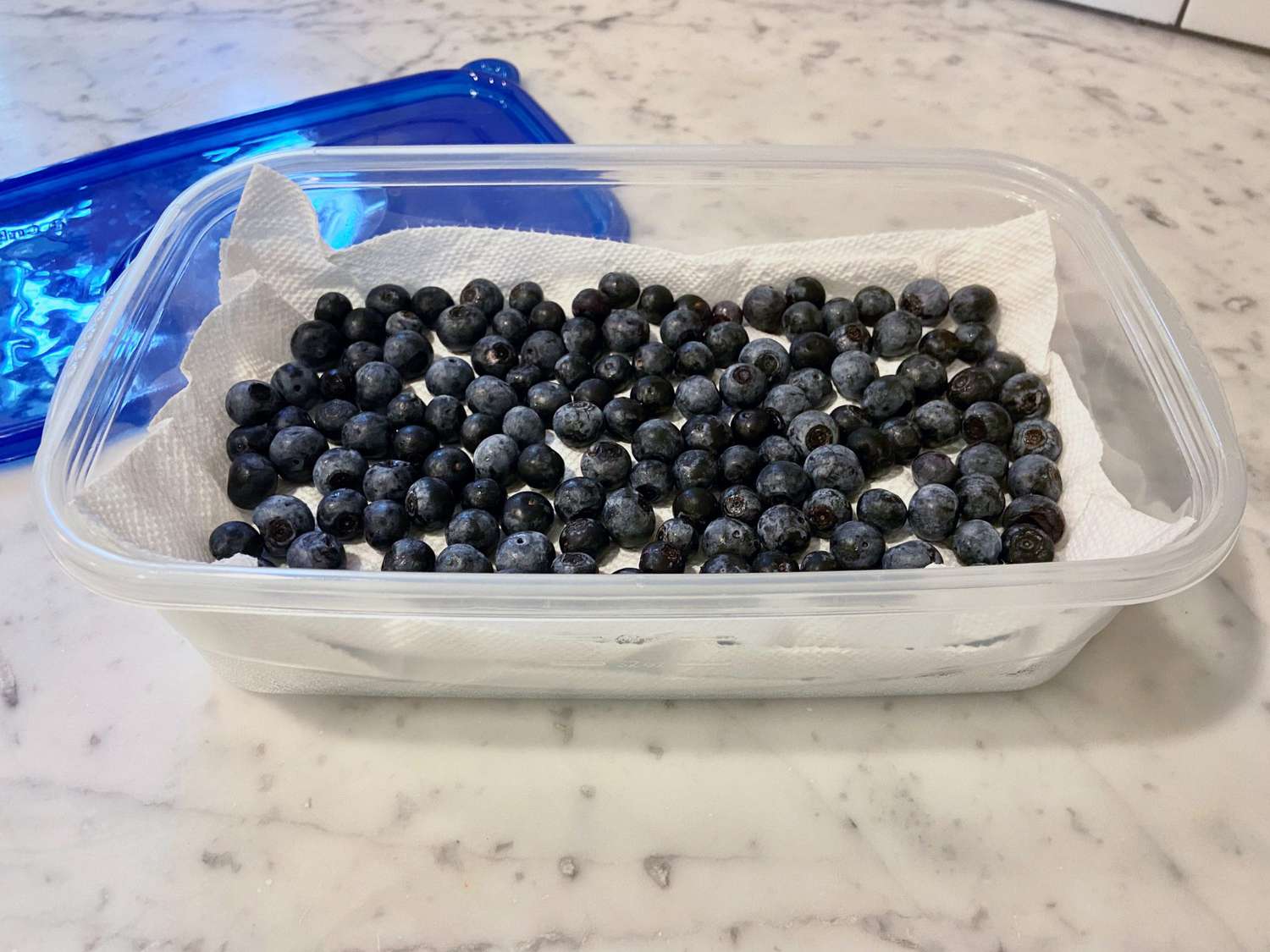
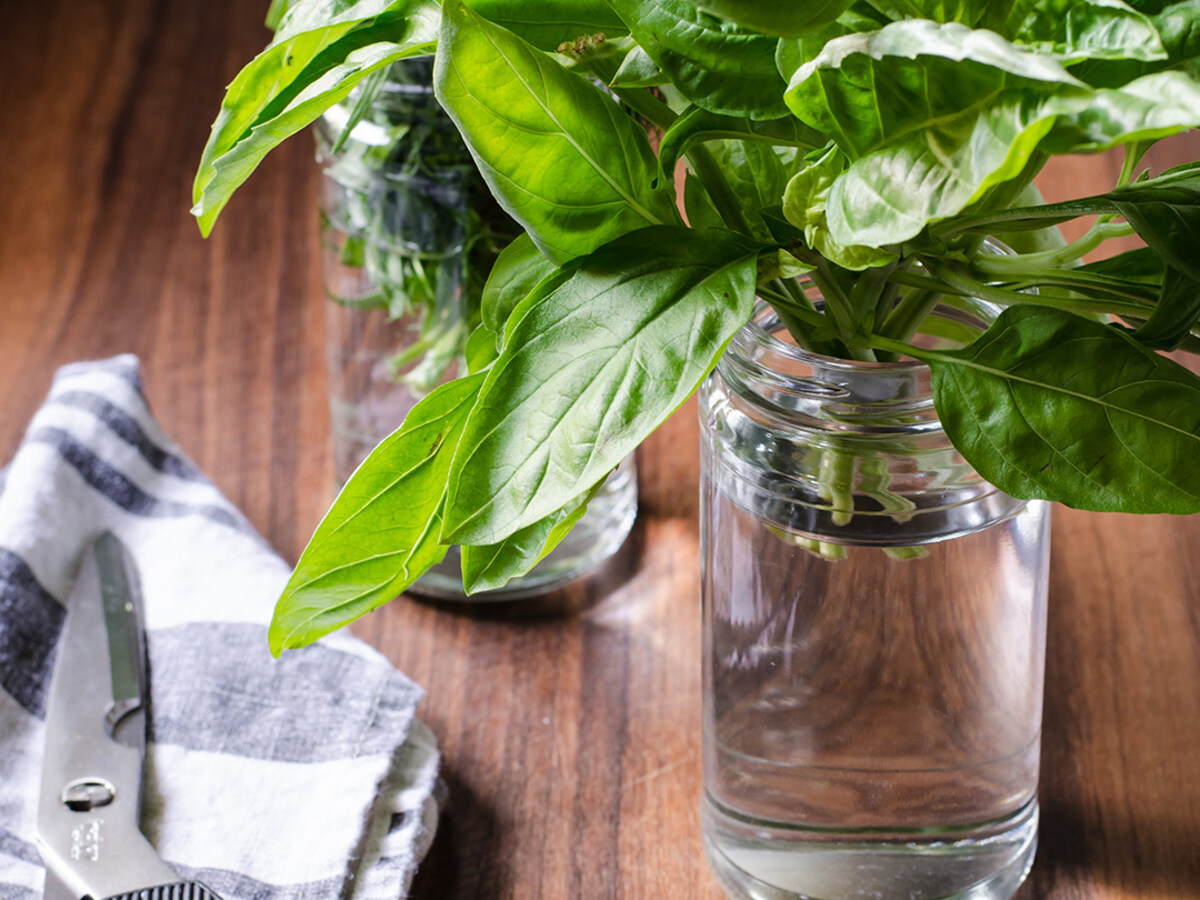

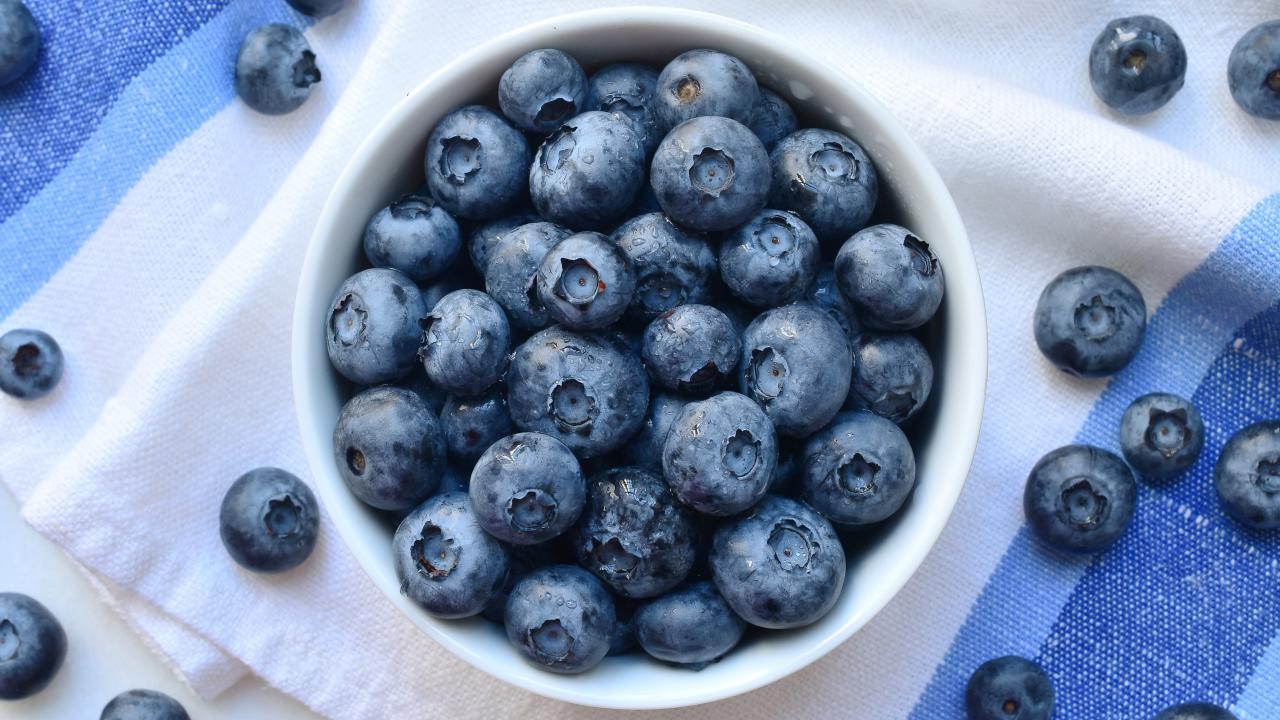

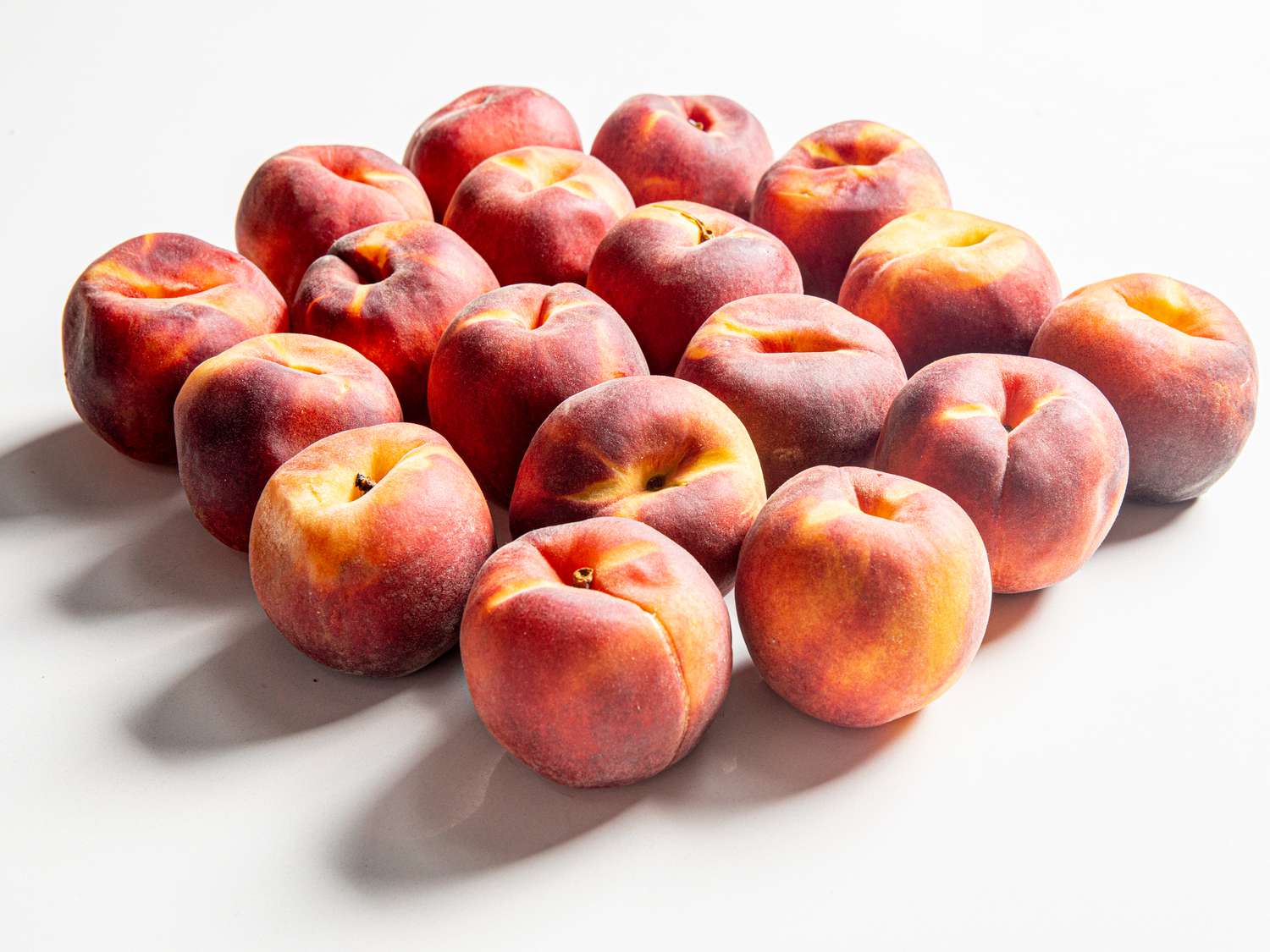

0 thoughts on “How To Store Fresh Strawberries After Picking”